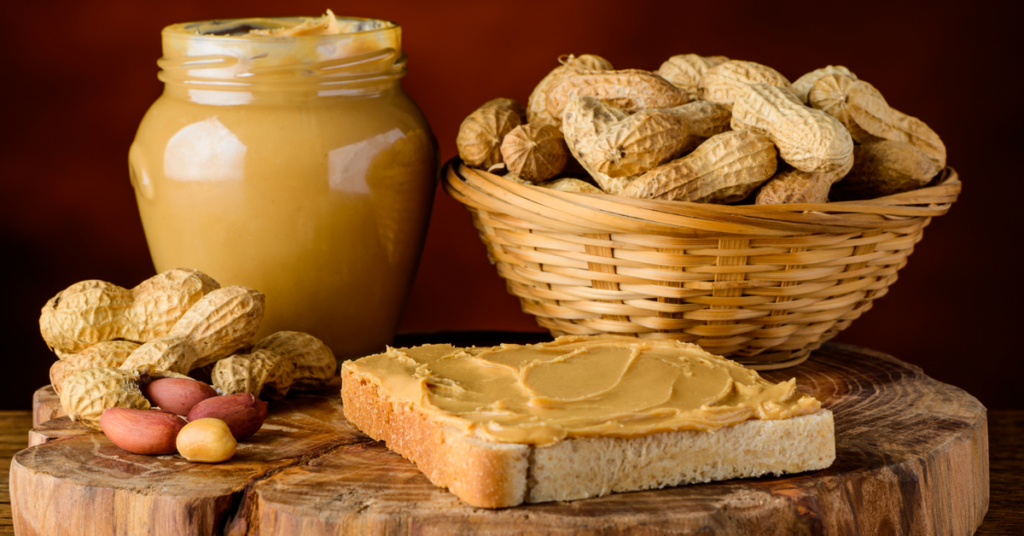Do you love peanut butter but hate the oily mess it makes? If so, you’re not alone! Peanut butter is a delicious and nutritious snack, but the oil can be a bit of a pain to clean up.
The oil in peanut butter starts to float on top when it’s all-natural. Some of the steps and methods such as straining the oil using a cheesecloth, buying peanut butter made with 100% peanuts so the oil separates by itself, draining the oil directly may help separate the oil.
In this blog post, we will teach you ways to easily separate oil from peanut butter.

Process of Separating Oil From Peanut Butter
The process of oil getting separated from butter is called syneresis. The peanuts’ natural oils separate and float to the top of the jar when peanut butter is manufactured without the use of added stabilizers (such as hydrogenated oil).
Usually, most peanut butter contains a minimum of 90% peanuts, the remaining 10% is usually other additives or other oils.
All-natural peanut butter can be easily identified by the amount of oil floating on top of the jar. When there is no oil floating on top, is usually means the peanut butter contains other oils such as cottonseed, rapeseed, soybean, or palm oil.
They dissolve in the peanut oil and prevent any oil from collecting at the top.
When peanut butter is made, peanut oil and peanut solids are mixed together. During this process, the peanut solids absorb some of the oil while some of it remains on top.
Over time, the peanut solid absorbs more of this oil which then leaves a smaller amount floating at the bottom. As you continue to stir your peanut butter, you will notice peanut oil rising to the top.
When the peanut solids can no longer absorb any more oil and it is fully saturated or contains as much peanut protein and fat as possible, this process of syneresis stops. This is why some peanut butter may not have a lot of peanut oil floating on top while others may have a lot.
Storing peanut butter in the fridge will slow down this process and prevent peanut oil from rising to the top.
The peanut butter will continue to thicken and separate if you store it in the fridge for a long time. Don’t worry, this peanut oil is not an indication that the peanut butter has gone bad.
LEARN MORE: How To Store Coconut Oil In Hot Weather?
Other Ways to Separate Oil From Peanut Butter
If you find peanut butter too oily for your taste, there are a few ways to separate the oil from peanut butter. Some of the peanut butter have added oils and preservatives making it difficult to separate peanut oil from peanut butter.
But if you follow certain techniques, you can easily drain out all extra peanut oil from peanut butter. The peanut oil can be separated from peanut butter in several ways:
- If peanut butter contains no added oil and is made only of ground peanuts, they may be separated by letting the peanut butter sit in a jar at room temperature overnight. The peanut oil will rise to the top as it separates from the peanut solids.
- The layer of oil is easily visible and can be removed with a spoon.
- After oil collects at the top it can be poured off directly to a separate bowl.
- When peanut butter has been ground to a creamy consistency, as in commercial peanut butter, the peanut oils are more evenly distributed throughout the product. In this case, the peanut oil will not rise to the top and can only be separated by adding peanut oil to peanut butter and then removing it altogether.
- Pour the peanut butter into a colander or a cheesecloth, placing a bowl underneath to catch the oil. Use your hands to press and squeeze the peanut butter until the oil separates from the paste. Discard the oil or save it for another recipe.
LEARN MORE: How To Make Infused Olive Oil Last Longer?
Things to Do if You Don’t Want Oil Separation
- You can buy peanut butter that is made specifically to prevent oil separation. These peanut butters have a stabilizer called hydrogenated oil which helps the solids and oils mix together so no oil separates.
- If you want to prevent your peanut butter from separating, store it upside down. This will allow any extra peanut oil to move back into the peanut butter.
- You can also store your peanut butter in the fridge which will slow down the separation process.
LEARN MORE: How to Store Used Peanut Oil?
Reasons to Separate Oil From Peanut Butter
There are a few reasons why you might want to separate the oil from peanut butter.
- You’re making peanut butter cookies and don’t want the extra oil in them.
- You just don’t like the taste of peanut oil.
- You don’t like the creamy texture of peanut butter rather you like the chunky texture.
- To cut down on the extra calories from the oil.
No matter your reason, separating the oil is easy to do with a few simple steps.
LEARN MORE: How Many Times Can You Use Peanut Oil?
Conclusion
Now that you know how to separate oil from peanut butter, it’s time to put your skills to the test. Go ahead and get started on making your own delicious peanut butter spread without the extra oil.
Follow these simple steps and you’ll be enjoying your favorite snack without worrying about the mess! Remember, the best way to do this is by using a cheesecloth!

